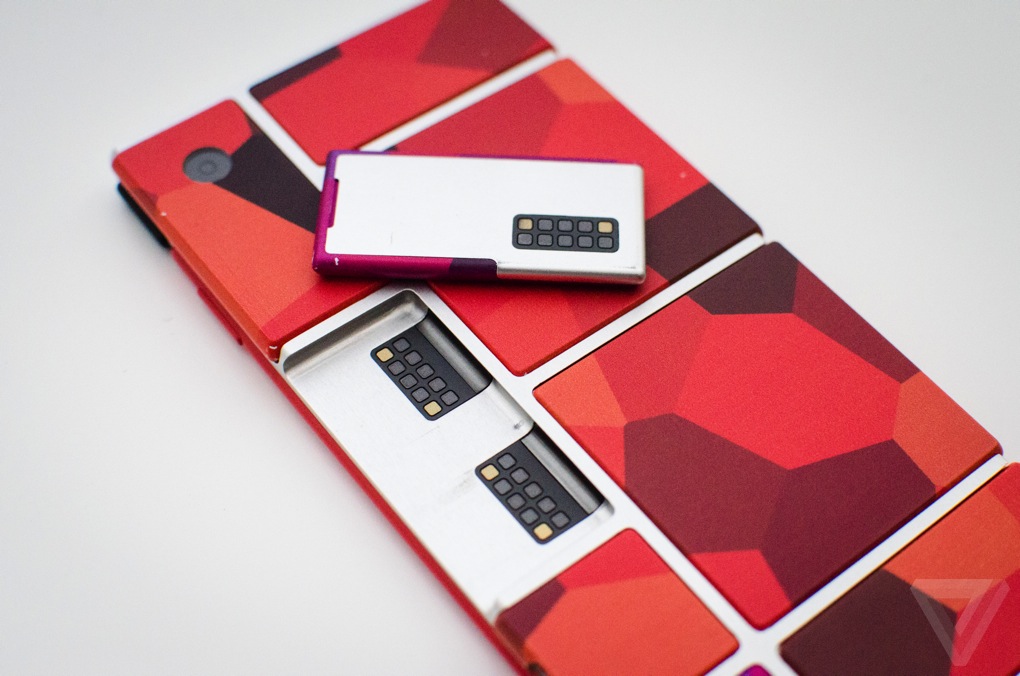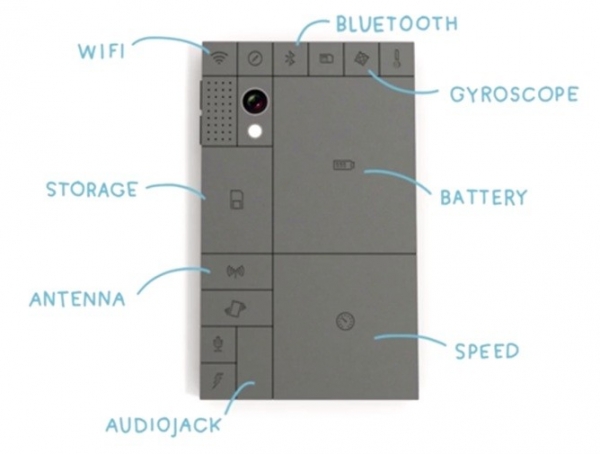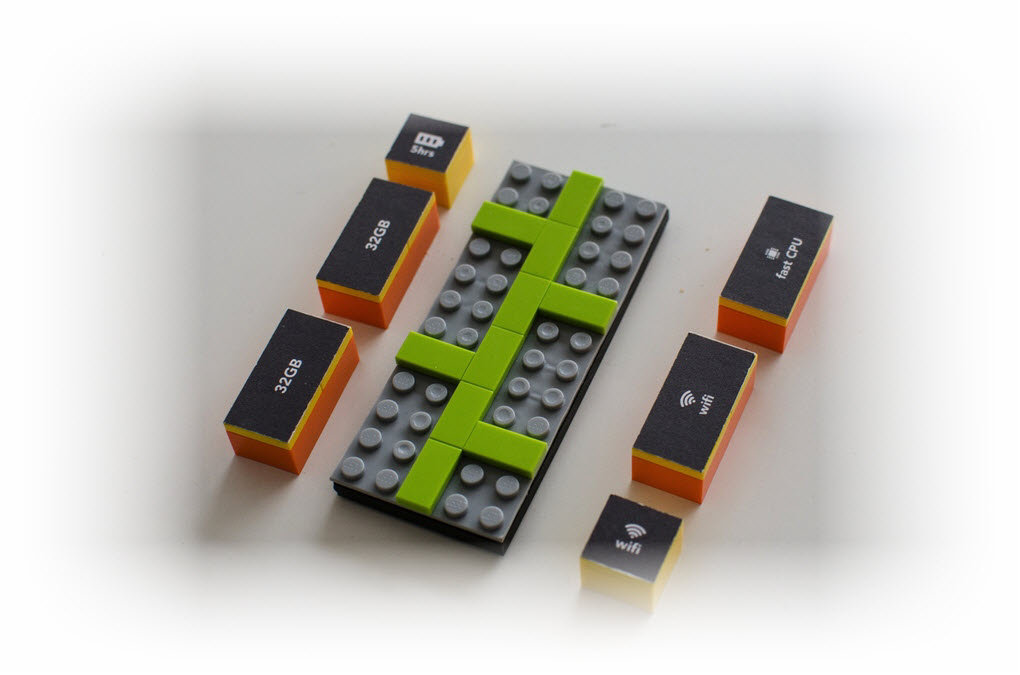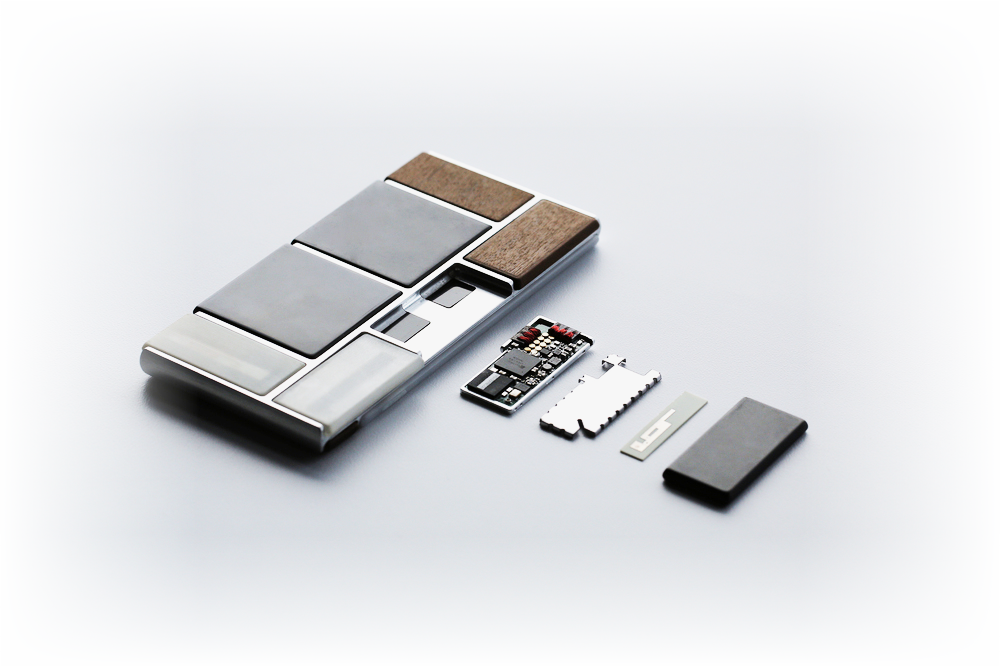Modular Smartphone Prototype: Future Technology Is Just An Year Away
The first look of this, interestingly innovated smartphone will remind you of a Lego toy set from the children’s play room. However, it is an idea introduced by Dave Hakkens; an Eco-friendly and revolutionizing graduate Dutch designer from Netherlands.

What Invoked The Idea Behind A Modular Smartphone?
‘PhoneBloks’; the concept introduced by Dave Hakkenshad the primary idea of reducing electronic waste level that is highly building presently; most of which is due to smartphone. Therefore, as part of the plan they proposed a Lego like module for every specification of a phone.

We are usually in a habit of replacing our electronics; especially smartphones as soon as some part of it gets wrecked. But developers and designers from PhoneBloks; chose to come up with something better; like the idea of a customizable phone.
Here, if your camera or battery is wrecked or isn’t the kind that you desire for; you don’t go for the replacement of your entire phone but just the respective module for your camera / battery.

Acting Upon The Idea: Google’s Contribution To PhoneBloks
Without implementation, the idea was nothing but a mere THOUGHT!
Hence, it was important for the idea to be accepted and supported in order for PhoneBloks to work further on it. In year 2013, Google and Motorola both announced similar interest towards introducing a modular phone and collaborated with PhoneBloks to come up with a joint campaign named “The Project ARA”.

You can replace video card, RAM, etc.; of your desktop computer and similar is the case with this soon-to-be-launched smartphone. All the blocks representing a feature of the phone can be customized according to your need. Although, the project is still under development; it is said that if the plan succeeds; level of smartphones will increase up to an incomparable magnitude.

What you see up here is the only component contributed into the project by Google; the “Endoskeleton Structure” known as Endos which also happens to be the most important segment.
“Technology Worth Looking Forward To” – Myth Or Fact?
There are always two aspects of every new innovation. Similarly, Project ARA too has been occupied with a lot of positive feedbacks as well as critical reviews. Let’s put some light over both the perceptions made by a combination of smartphone users and technical experts from around the world.
What Makes It Worth?
- Fully Customizable: What makes this smartphone smarter than any other phone is that each and everything about this phone is customizable! Replacing a battery sound too common, but what if you could replace or completely remove the camera, Bluetooth, audio jack, and speakers of your phone without causing any harm to it? That’s the level of precise technology Project ARA has proved to put forward. Now, you won’t have to wait around for a phone having features that suit your preferences, get your hands on the Project ARA and customize it your way!

- Shatter-Proof Modules: The replaceable modules of this phone only resemble Lego set blocks; but are designed with electropermanent magnets that hold them firmly together with the Endos.Despite of the substantial love for our phones, we sadly tend to drop it anyways. So, in case you drop this one; it might break your heart but not spill the modules from its structure. The best part of it all is, even if you break something, you can get it replaced rather than changing your entire phone!

NOTE: Electro magnets require power supply to work therefore, the modules have rather been built with electro “permanent” magnets instead. No continuous electrical energy provision is required thus; making battery consumption stay entirely unaffected by the technology.
- Replaceable-Everything: Over dependency of today’s generation over electronically storing data is what makes RAM and Storage issues the most common amongst all the others. Project ARA has got a solution for that too! There is a replaceable module for storage and RAM… solution?

- The Gyroscope Module: In the self-explanatory picture above; you can find a module named Gyroscope right above the battery module. For those who are not yet aware of it, this is a feature that is responsible for sensing movements; whether it’s yours or your phones’. Built for applications like; compass, gaming, or picture viewer to automatically detect the movements and rotate the screen or object in it accordingly. Take it or leave it, the choice is yours!
- No Rocket-Science Involved: If you think that a creation so powerful and involving futuristic technology would only be adaptable for the techies then you aren’t aware of Google’s Scheme yet. Changing modules is as easy as putting pieces to a puzzle; rest is just the usual smartphone, no rocket-science involved. And Google has planned to launch it firstly in the developing countries to users who cannot afford a basic smartphone with the starting price of $50 for a “grayphone”.

What Makes It A Risk?
It was difficult to find out flaws in something that is still a concept and not yet a product; at least not before January 2015. But here are some facts that make it a risky investment.
- Third Party Involvement: Unless third party companies show voluntary involvement in the project development of Project ARA is impossible. The most Google could do was to create “Endo” while for rest of the project to be a success; more and more companies are required to make efforts and not just interin making their own brand of modules (only Motorola stood out). Without their initiative the idea cannot flourish for long term. Hence, getting your hopes high on this innovation could be a little disheartening if it doesn’t work out.

- Grayphone Model: Although, a grayphone model will be given out for $50 but what’s the use of a smartphone if it’s only smart and not a phone. The grayphone is the most basic model from project ARA to start up that won’t be having facilities like the camera and won’t be serving the fundamental need of a smartphone i.e. cellular facility. There will just be an Endo with some trial level of modules and the only connection it will be able to make will be with Wi-Fi network.

- Casing The Modules: The project is also planning on creating a 3D printing machine to design customized casings for the phone’s modules. But due to the replaceable module facility there is no to come up with a full body case for these phones leading to a risk of it getting spoilt by dust or liquid substances entering in thus, reaching and ruining the circuit.

A Conclusive End to this discussion would be suggesting, enthusiasts around the world to wait for the right time i.e. January, 2015 when the smartphone will ultimately be launched officially. Only then can things be made clear as to what’s hot and what’s not, about this cool idea and technology put to work for a future smartphone; The Project ARA.
Regardless of the risks involved and yet not clear objectives; everybody is eagerly looking forward to the launch of Project ARA, which makes all the efforts put in by the people working on it; worthwhile. Stay updated about the Project Updates via PhoneBloks & Motorola Project ARA


